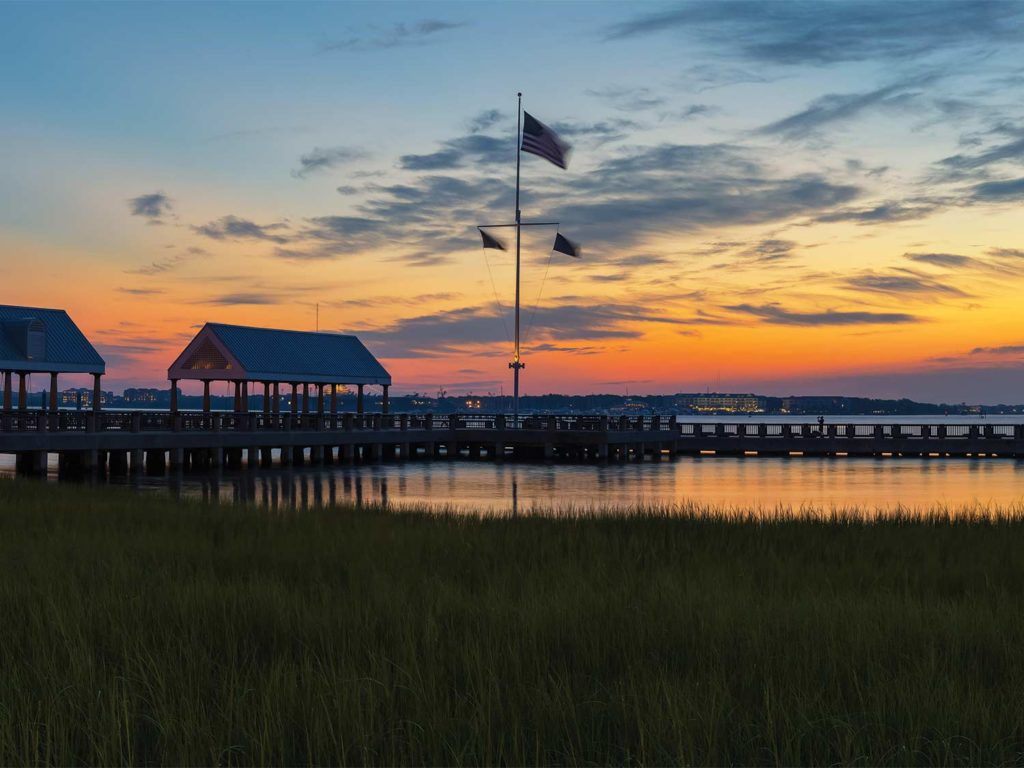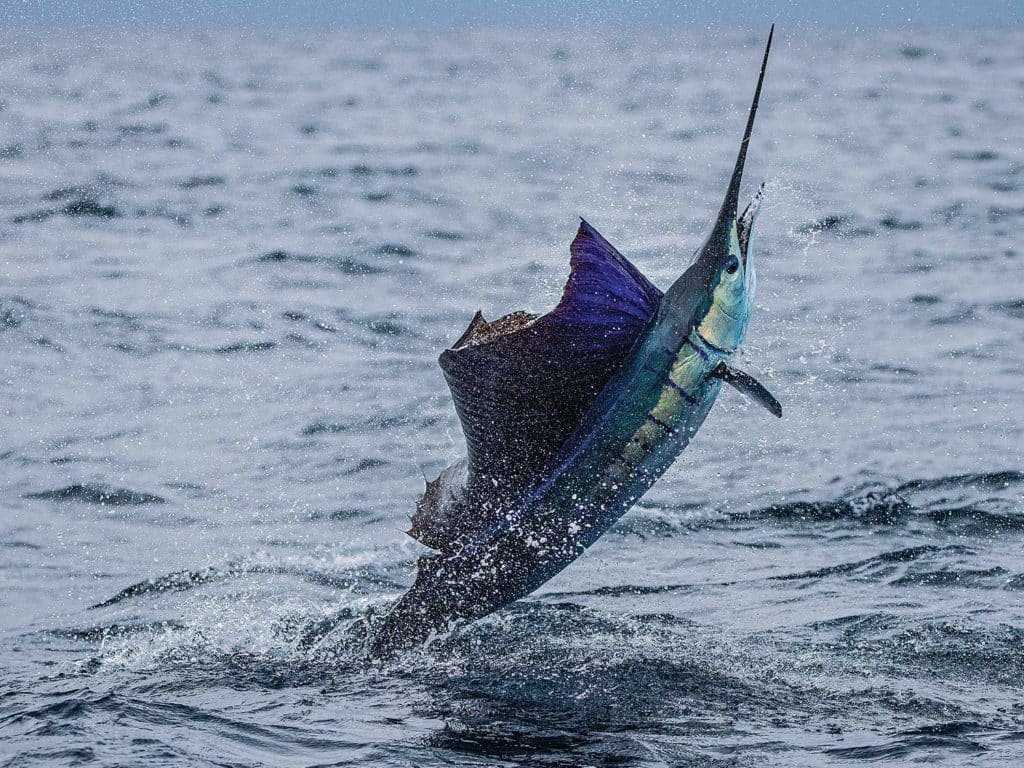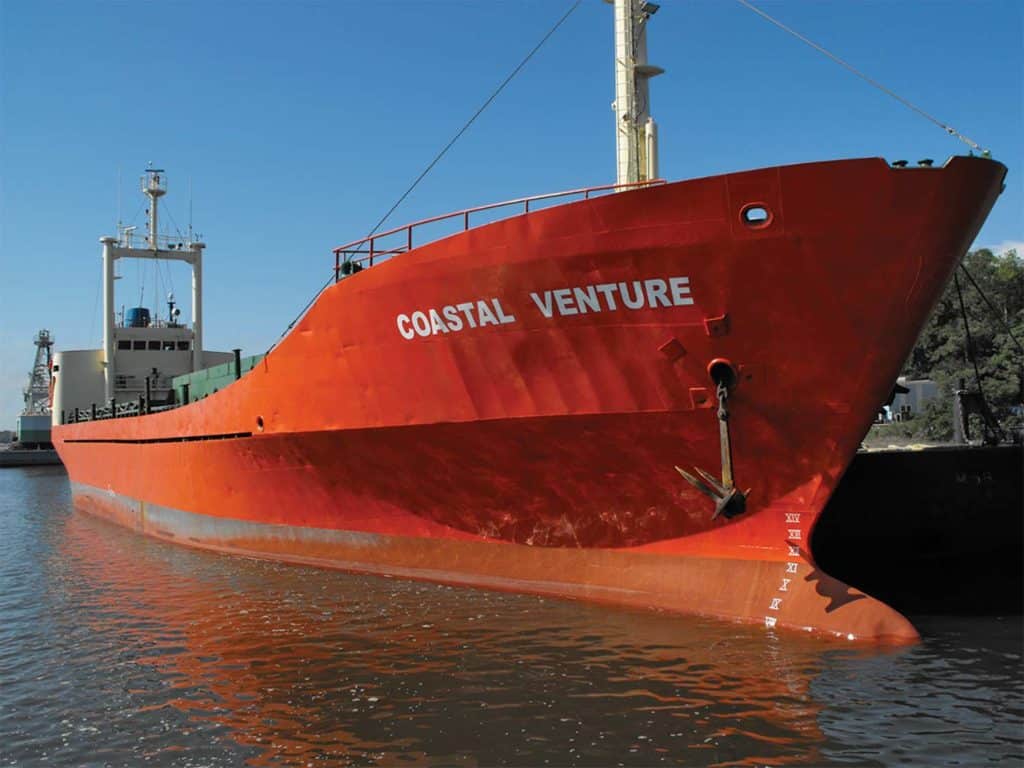
During the blazing heat of the summer months, it’s typical to find multiple sport-fishing boats trolling a 4-by-6-mile area located just over 50 nautical miles from the rainbow-hued homes of historic downtown Charleston, South Carolina. While these crews are busy monitoring teasers, changing baits, hooking fish and making memories, a submerged city of South Carolina’s old infrastructure—swing bridges, barges and shipping containers—lies more than 300 feet beneath them.
Here, at the bottom of the ocean, you’ll find the Charleston Deep Reef site. But to those in the Lowcountry billfish community, this bluewater destination is more than that. It’s hallowed ground, and home to the South Carolina Memorial Reef.
Watch: Marlin in the dredge!
A Perfect Partnership
The South Carolina Department of Natural Resources first selected the site as a suitable location to establish a deepwater artificial reef. Materials sunk in this sandy area could provide vertical relief habitat for deepwater snapper and grouper species, such as snowy and Warsaw grouper, which are managed by the South Atlantic Fishery Management Council, a body charged with managing fisheries in federal waters off North and South Carolina, Georgia, and the east coast of Florida. While the SCDNR successfully secured the appropriate permitting and designations with the council and other federal partners to establish the Charleston Deep Reef, it initially found it difficult to procure funding to purchase the needed materials. That’s where the billfish community entered the equation.

The Charleston Deep Reef site was designated a marine protected area in 2009, ahead of any material being deployed at the location. Bottomfishing was prohibited, but trolling for pelagic species such as dolphin, wahoo, sailfish and marlin was allowed. So when a group of avid offshore fishermen proposed an idea to raise funds to support a memorial reef off the coast of South Carolina, a perfect marriage of conservation and commemoration emerged. The SCDNR needed these fishermen to help secure funding for reef material, and the fishermen needed a permitted site to establish an artificial reef to honor those who had died. Although the two concepts evolved separately from one another, neither project could succeed without the other. Thus began the building blocks for the South Carolina Memorial Reef.
The South Carolina Memorial Reef, an organization established to raise funds for various projects at the Charleston Deep Reef site, collects private donations from individuals and businesses to honor fishermen who have passed on. The website for the Memorial Reef describes the site as “a sustainable resting place that creates life after life,” and to date, dozens have been memorialized—men and women. Donations made have been used to add numerous barges, cranes, shipping containers, cell towers, bridges and other materials to the site since 2014.

The partnership fostered here between SCDNR and bluewater fishermen should not go unnoticed. It’s an effective and mutually beneficial partnership. So many fisheries stakeholders stand to benefit from these efforts. Ongoing research and monitoring at the Charleston Deep Reef continues to showcase that the structures are attracting deepwater snapper and grouper species and the area is serving as a protected spawning site—exactly what SCDNR and federal partners hoped to achieve. And in a state where natural bottom structure can be difficult to come by, this is encouraging news.
Even though artificial reefs and areas closed to bottomfishing are not the solution to all of the challenges that face these species, the Charleston Deep Reef can serve as a model for future efforts, and it appears that the potential benefits of the site extend well beyond bottomfish. All of the new structure at the Charleston Deep Reef site has led to a familiar cycle: new current formations, nutrient-rich upwellings, the increased presence of bait, and a great billfish bite.

Finding Peace in Memoriam
While the initial conservation mission of the Charleston Deep Reef and the resulting billfish bite are to be commended and recognized, some of the greatest successes of the site involve the people who are memorialized there and the friends and family they left behind. After the sudden passing of two men who were integral members of the local sport-fishing community—Robbie Johnson and Tony Smoak—in the late 2000s, family members and friends spearheaded the South Carolina Memorial Reef concept. They felt compelled to do something to honor their loved ones in a way that was lasting, influential and true to their values. “We thought it would be a great idea to memorialize our loved ones who loved the ocean and fishing with a great conservation project, one that could benefit both bottomfishing and pelagic fishing,” says Johnson’s brother, Francis, when recalling those early meetings with the South Carolina Department of Natural Resources. Years later, Francis Johnson would also lose his wife, Dicksie. She is now memorialized at the site along with her brother-in-law.
Johnson—whose family owns a 61-foot Ritchie Howell called Sea Fix and Toler’s Cove Marina in Mount Pleasant—comes from a prominent offshore-fishing family. Four generations of Johnsons fished the waters around the memorial reef long before the site was ever established. Now, whenever the family visits, they are reminded of the loved ones who have passed away. Johnson says: “I have lost a few people who were passionate about offshore fishing, and it certainly feels like they are with you when fishing the reef. My brother seems to fish with us all the time, but especially there. To have gone out and watched the sinking of the reef while memorializing him was very special.”
Deploying material to the South Carolina Memorial Reef is an impressive feat in and of itself. Considerable planning is required when towing tons of material and structure to the site and making sure it lands in the correct spot. But, however complicated those calculations and processes might be, they simply cannot compare to the complexity of emotions during a deployment. Family members of those memorialized often gather at sea to watch the event. Some fish through the wait. High Yield even released a sailfish minutes before a deployed barge dipped below the surface of the sea, all while celebrating the life of a late friend, Capt. Paul Rogers.

It’s impossible not to get excited, emotional or moved through all of this. The deceased have been honored at the memorial reef in myriad ways: Tributes are welded to reef material before deployment, prayers are spoken, stories are shared, and ashes are spread. The manner in which people grieve and celebrate life seems to vary at the site, but there is always a common thread: The connection to a lost loved one is palpable during and after the experience.
The Smoaks were deeply moved during that first reef deployment. They watched the event unfold as a family, remembering the man they had lost much too soon. Tony had always been a family man, raising his two young daughters around the docks and aboard the Smoak family’s Fishwrapper, which is still operated today by Tony’s brother, Joey Smoak. Tony’s daughter Amanda, now in her early 20s, says: “Harbor cruises, early-morning fishing trips and after-school time all started at Ripley Light Marina with my dad. Heading to the docks was my favorite place because it meant spending time with him, grabbing leftover fish for dinner, checking on the tiny shrimp that lived under the dock, netting mullet or hoping that a manatee picked our slip to take a drink.”
It’s easy to see why a kid would want to spend hours alongside Dad when he introduces his children to this constant supply of adventure and entertainment. And Tony, whether spending time with kids or sharing stories with adults, was no stranger to entertaining those around him. So it was only fitting that Tony’s memorial at sea was a breathtaking show for his family and friends. “The first barge going down with all the crosses attached and Tony’s ashes was an awe-inspiring sight to experience with my children,” Tony’s wife, Alison, recalls. “All the boats were surrounding the site when the barge sank. The water turned an amazing Caribbean blue color; we all cheered and threw out wreaths of flowers. All the hard work the SCMR team had done became a reality.”
Read Next: Favorite Bahamas destination? Four well-traveled captains tell all.
Stevie Leasure, captain of the 57-foot Sea Island Summer Girl, was also involved in the initial proposal for the South Carolina Memorial Reef. He had been friends with Robbie Johnson and Tony Smoak. When he later served as the chairman of the advisory board of directors of the South Carolina Governor’s Cup Billfishing Series, Leasure recognized and appreciated the site’s biological and social significance. Once the site started to attract sailfish and blue marlin, he was largely responsible for encouraging others to donate to the cause, often citing the consistent billfish bite during the summer months. “The fishing reports within the area can be outstanding,” he says. “It’s not uncommon to see boats that have traveled 80 to 100 miles in the area just to fish for the day. Many boats that are traveling up and down the coast have been known to spend a couple of extra days in Charleston to fish the reef as well. During the Governor’s Cup tournaments, you’ll always find a crowd there.”
Some competitors in the SCGC Series have even credited the reef site for playing a major role in their success during tournaments. The 59-foot Spencer Man Cave, owned at the time by Billy Gressette, won the 2018 Megadock Billfishing Tournament after releasing one blue marlin and six sailfish at the reef over the course of two days. The Man Cave team had the good fortune of fishing the site by themselves on the last day of the tournament because most of the fleet chose to fish farther north. It didn’t take long for word to spread that Gressette had made the right choice by returning to the reef that day, going on to clinch the win after releasing an additional four sails at the site. In many ways, tournament participants have Leasure, the Johnsons, the Smoaks, and the other early pioneers of the project to thank for that.

Both Johnson and Leasure look back on the whole of their memorial-reef journey with reverence and admiration. Much has been accomplished over the past decade, with three distinct deployments occurring at the site. And as Johnson and Leasure continue to support and promote efforts to expand the South Carolina Memorial Reef, they and others in the community find solace in knowing that it exists. The reef inherently brings peace and comfort to those affected. “I hear all the time about great fishing stories, people saying, ‘I know my [family member/friend] was looking down on us,’” Johnson says.
Leasure also chimes in: “To know that the presence of some great people is now a part of the reef is truly a blessing.” Amanda Smoak, full of warmth, says, “I love the ocean because of my dad, and with the memorial reef, there’s a piece of him just offshore that’s always waiting for me.”
The memorial reef is a place where folks can visit with departed family and friends. It holds years of memories, but it also includes those lost in making new ones. It’s hard to imagine another place like it.

Bigger Than All of Us
The South Carolina Memorial Reef continues to raise funds to add more material to the site. An effort to purchase the decommissioned 247-foot M/V Coastal Venture is now underway, and donations received will help to prepare and deploy the ship at the site. Projects like this would simply not be possible without the steadfast support of South Carolina’s sport-fishing community. A long list of individuals, boat owners, boatbuilders, tackle shops and other businesses continues to make donations in honor of loved ones lost. Leasure says: “Every time I cross any of the structures at the South Carolina Memorial Reef, it’s extremely heartwarming. To think how a group of friends and our entire fishing community came together and worked so hard to bring this project to life is just awesome!”
The South Carolina Memorial Reef was born from love, kinship, memory and hope. When all of that powerful emotion and cause comes together while releasing billfish above the very structures placed there to honor the deceased, it’s suddenly like fishing in an entirely different ocean—one that is somehow familiar and otherworldly at the same time. In recent years, South Carolina’s sport-fishing community has sadly lost a long list of legendary people. Grandfathers, fathers, brothers, sons, daughters, sisters, mothers and grandmothers are forever honored in a special location at the bottom of the Atlantic Ocean. Children will grow up fishing at an area ennobled with the legacy of lost relatives, some who they may never have been able to meet.
As more fishermen are memorialized, the South Carolina Memorial Reef becomes a greater mainstay for the community. It’s home—not only to the past, but to the present and to the future as well. Those who fish here really know what lies beneath; they are the ones who understand that this project is bigger than all of us, and that knowledge truly does transcend all time.
To learn more about past and ongoing projects, including the M/V Coastal Venture project, please visit scmemorialreef.com.
Fair winds and Following seas…
As of press time, 40 souls have been memorialized at the South Carolina Memorial Reef. Please take a moment to honor them.
- George W. Aimar Jr.
- Paul E. Bailey
- William S. Baldwin
- Fred L. Bennett
- Russell Burton Bennett Sr.
- Capt. Jim Bost
- Edgar A. Buck Sr.
- Thomas E. Bussey
- Mark Daniels
- R. Creighton Dayhoff
- Don Dent
- Earl R. Dupriest Jr.
- G. Manly Eubank
- Boyce Garrick
- Capt. Daniel E. Geiger
- Frederick R. Glaesner
- Thomas Douglas Hancock
- Dicksie Johnson
- Robert C. Johnson Jr.
- Thomas Chinnis Johnson
- Matthew Key
- Dr. Dale R. Lackey
- Corky Lee
- JB Miller
- David Pearson “Buck” Morris
- Harold Scott Newton
- Paul Peeples
- Capt. David Redd
- Capt. Paul Rogers
- James Patrick Shannon
- Robert A. Shore Jr.
- Capt. Wayne Skinner
- Tony Smoak
- Dr. William H. Snyder Jr.
- Burke Wall
- Steve Wallace
- Col. George Kenneth Webb
- George West
- Grady Williams
- Damien J. Zanetti
This article was originally published in the October 2021 issue of Marlin.







